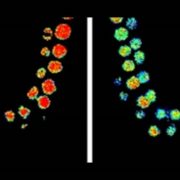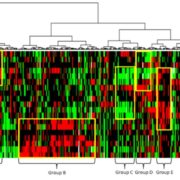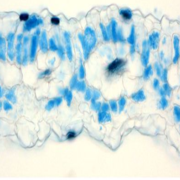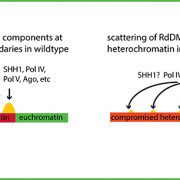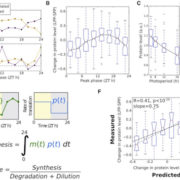Flip the light switch for protein production
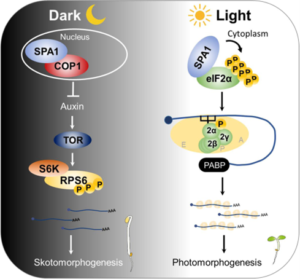 Protein synthesis, modification, and degradation are not only crucial for responding to environmental change, but they also represent significant energy costs for a plant. Energy homeostasis is highly affected by the presence of light. In young seedlings, light enhances translation during the dark-to-light transition, although we do not fully understand how this process is regulated. SPA kinases work with partners inside or outside the nuclei to trigger translation for skotomorphogenesis or photomorphogenesis. In mammalian and yeast cells, the reversible phosphorylation of eukaryotic initiation factor 2 alpha (eIF2α) at serine 51 regulates translation, but plants show exceptions. Recent research by Chang et al. reveals that light exposure prompts SPA kinases to phosphorylate the eIF2α C-terminus, excluding serine 51. This non-traditional phosphorylation enhances the translation of mRNAs involved in light responses, photosynthesis, and chlorophyll biosynthesis. (Summary by Yueh Cho @YuehCho1984) Nature Comms 10.1038/s41467-024-47848-7
Protein synthesis, modification, and degradation are not only crucial for responding to environmental change, but they also represent significant energy costs for a plant. Energy homeostasis is highly affected by the presence of light. In young seedlings, light enhances translation during the dark-to-light transition, although we do not fully understand how this process is regulated. SPA kinases work with partners inside or outside the nuclei to trigger translation for skotomorphogenesis or photomorphogenesis. In mammalian and yeast cells, the reversible phosphorylation of eukaryotic initiation factor 2 alpha (eIF2α) at serine 51 regulates translation, but plants show exceptions. Recent research by Chang et al. reveals that light exposure prompts SPA kinases to phosphorylate the eIF2α C-terminus, excluding serine 51. This non-traditional phosphorylation enhances the translation of mRNAs involved in light responses, photosynthesis, and chlorophyll biosynthesis. (Summary by Yueh Cho @YuehCho1984) Nature Comms 10.1038/s41467-024-47848-7


